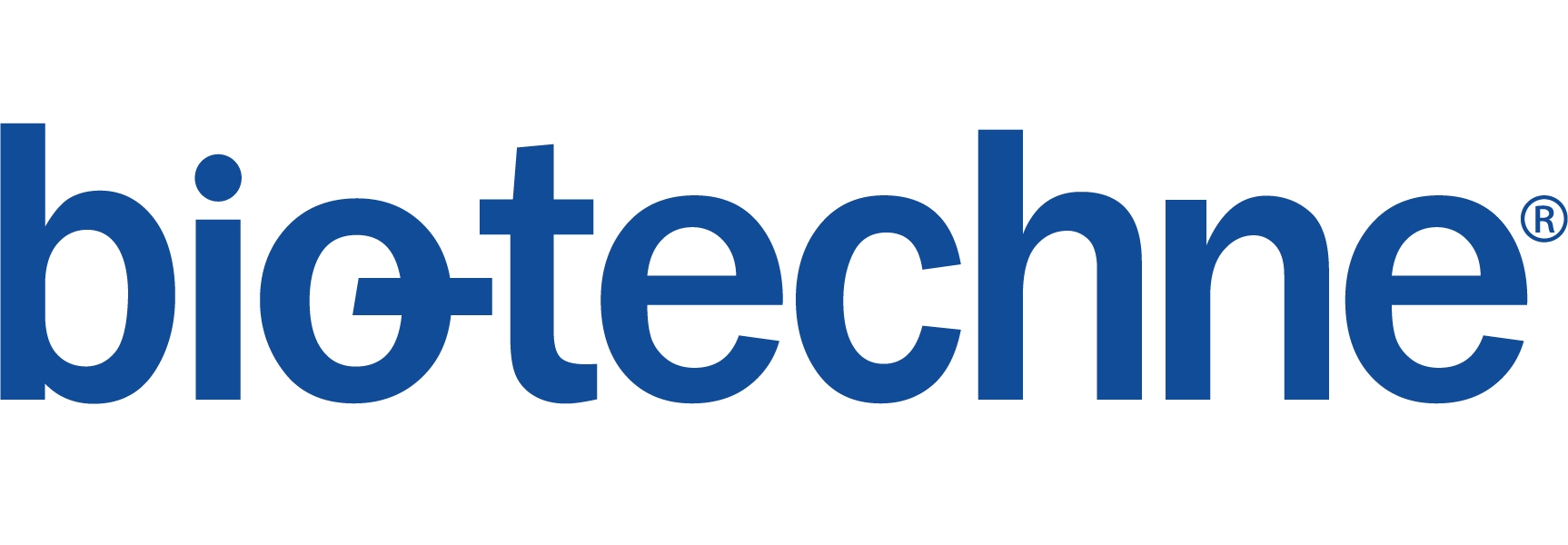-
GENE_NAME : CD20
CD_NAME : CD20
DESC: membrane-spanning 4-domains, subfamily A, member 1
OTH_NAMES: B1; Bp35; MS4A2CLONE_NAME ISO_TYPE SUBMITTER AVAILABLE_FROM 2H7 IgG2b Clark BD Biosciences L26 IgG2ak Johansson AbD Serotec L27 IgG1 Ishii BD Biosciences 2H7 IgG2b Tinsley Novus Biologicals B-ly1 IgG1 Tinsley Novus Biologicals L26 IgG2ak Tinsley Novus Biologicals MEM-97 IgG1 Tinsley Novus Biologicals 2H7 IgG2b Clark BioLegend 2H7 IgG2b Clark AbD Serotec 2H7 IgG2b Clark Thermo Fisher Scientific 2H7 Mouse IgG2b kappa EXBIO Praha MEM-97 Mouse IgG1 Horejsi EXBIO Praha -
CLONE_NAME ISO_TYPE SUBMITTER AVAILABLE_FROM 1F5 IgG2a Clark 2H7 IgG2b Clark BD Biosciences 93-1B3 IgG1 Vilella 109-3C2 (weak) IgG3 Vilella B1 IgG2a Stashenko B9E9 IgG2a van Agthoven B-B6 IgM Wijdenes B-C1 IgM Gallart B-H20 IgG2a Vermot-Desroches B-ly1 IgG1 Poppema BLA.36 IgG3 Imam CAT13.7H8 IgG1 Hadam D2-1H4-1 IgG1 Hekman D2-1H4-2a IgG2a Hekman D2-1H4-2b IgG2b Hekman F4B-13C6 IgM Poncelet FB1 IgG2a Nozawa G28-2 IgG3 Ledbetter HB13a IgM Tedder HB13c IgG1 Tedder HB13g IgM Tedder HB13h IgG1 Tedder HI47 IgG3 Chen L26 IgG2ak Johansson AbD Serotec L27 IgG1 Ishii BD Biosciences LN8 IgG3 Ernst MD20.2 IgM van der Schoot MEM-97 IgG1 Horejsi NU-B2 IgG2b Yokoyama PDR78 IgG3 Pulford 2H7 IgG2b Tinsley Novus Biologicals B-ly1 IgG1 Tinsley Novus Biologicals L26 IgG2ak Tinsley Novus Biologicals MEM-97 IgG1 Tinsley Novus Biologicals 1632-1; EP459Y IgG Frolkis 2H7 IgG2b Clark BioLegend 2H7 IgG2b Clark AbD Serotec 2H7 IgG2b Clark Thermo Fisher Scientific 2H7 Mouse IgG2b kappa EXBIO Praha MEM-97 Mouse IgG1 Horejsi EXBIO Praha -
STRUCTURE
CD20 is a type III integral phosphoprotein belonging to the membrane-spanning 4A family.1-2 CD20 displays 4 transmembrane regions and potentially two extracellular loops, although the evidence for the smaller one is contradictory. 2-4 Both N- and C-terminal domains are located in the cytoplasm. The intracellular parts of CD20 contain several residues that can be phosphorylated.1-3
-
Teeling JL, Mackus WJ, Wiegman LJ, van den Brakel JH, Beers SA, French RR, van Meerten T, Ebeling S, Vink T, Slootstra JW, Parren PW, Glennie MJ, van de Winkel JG. The biological activity of human CD20 monoclonal antibodies is linked to unique epitopes on CD20. J Immunol. 2006;177:362-71.
-
Stamenkovic I, Seed B. Analysis of two cDNA clones encoding the B lymphocyte antigen CD20 (B1, Bp35), a type III integral membrane protein. J Exp Med. 1988;167:1975-80.
-
Beers SA, Chan CH, French RR, Cragg MS, Glennie MJ. CD20 as a target for therapeutic type I and II monoclonal antibodies. Semin Hematol. 2010;47:107-14.
-
Polyak MJ, Tailor SH, Deans JP. Identification of a cytoplasmic region of CD20 required for its redistribution to a detergent-insoluble membrane compartment. J Immunol. 1998;161:3242-8.
-
-
LIGANDS
Extracellular
No ligands have been described.1 However, it interacts in cis with itself forming multimers and it also associates with the BCR, CD40 and MHC class II.2-4 It potentially interacts with MHC class I, CD53, CD81 and CD82.5
Intracellular
CD20 can be immunoprecipitated together with phosphoproteins and calmodulin-binding proteins.2 In particular, CD20 has been found to be associated with lyn, lck, fyn and PAG.6-7
-
Beers SA, Chan CH, French RR, Cragg MS, Glennie MJ. CD20 as a target for therapeutic type I and II monoclonal antibodies. Semin Hematol. 2010;47:107-14..
-
Polyak MJ, Li H, Shariat N, Deans JP. CD20 homo-oligomers physically associate with the B cell antigen receptor. Dissociation upon receptor engagement and recruitment of phosphoproteins and calmodulin-binding proteins. J Biol Chem. 2008;283:18545-52.
-
Buschow SI, van Balkom BW, Aalberts M, Heck AJ, Wauben M, Stoorvogel W. MHC class II-associated proteins in B-cell exosomes and potential functional implications for exosome biogenesis. Immunol Cell Biol. 2010;88:851-6.
-
Léveillé C, AL-Daccak R, Mourad W. CD20 is physically and functionally coupled to MHC class II and CD40 on human B cell lines. Eur J Immunol. 1999;29:65-74.
-
Szöllósi J, Horejsí V, Bene L, Angelisová P, Damjanovich S. Supramolecular complexes of MHC class I, MHC class II, CD20, and tetraspan molecules (CD53, CD81, and CD82) at the surface of a B cell line JY. J Immunol. 1996;157:2939-46.
-
Deans JP, Kalt L, Ledbetter JA, Schieven GL, Bolen JB, Johnson P. Association of 75/80-kDa phosphoproteins and the tyrosine kinases Lyn, Fyn, and Lck with the B cell molecule CD20. Evidence against involvement of the cytoplasmic regions of CD20. J Biol Chem. 1995;270:22632-8.
-
Deans JP, Li H, Polyak MJ. CD20-mediated apoptosis: signalling through lipid rafts. Immunology. 2002;107:176-82.
-
-
GENE_NAME : CD20
CD_NAME : CD20
CD20 is widely expressed on B cells during B cell development starting on early pre-B cells. CD20 is not present on plasma cells. 1 A small subset of T cells, accounting for 3-5% of T cells, displays moderate levels of CD20.2
-
Tedder TF, Engel P. CD20: a regulator of cell-cycle progression of B lymphocytes. Immunol Today. 1994;15:450-4.
-
Schuh E, Berer K, Mulazzani M, Feil K, Meinl I, Lahm H, Krane M, Lange R, Pfannes K, Subklewe M, Gürkov R, Bradl M, Hohlfeld R, Kümpfel T, Meinl E, Krumbholz M. Features of Human CD3+CD20+ T Cells. J Immunol. 2016;197:1111-7.
-
-
GENE_NAME : CD20
CD_NAME : CD20
Although there are still no clues of its ligands, the role of CD20 has been studied in several publications. In particular, there are many evidences indicating that CD20 regulates the calcium influx and therefore calcium cytoplasmic levels.1-3 Through this calcium influx, CD20 may be able to control the cell growth.3 In particular, CD20 functions downstream of the BCR and its role is tied to the expression of this receptor.1,4-6 In addition, CD20 also regulates B cell activation.7
-
Li H, Ayer LM, Lytton J, Deans JP. Store-operated cation entry mediated by CD20 in membrane rafts. J Biol Chem. 2003;278:42427-34.
-
Bubien JK, Zhou LJ, Bell PD, Frizzell RA, Tedder TF. Transfection of the CD20 cell surface molecule into ectopic cell types generates a Ca2+ conductance found constitutively in B lymphocytes. J Cell Biol. 1993;121:1121-32.
-
Kanzaki M, Shibata H, Mogami H, Kojima I. Expression of calcium-permeable cation channel CD20 accelerates progression through the G1 phase in Balb/c 3T3 cells. J Biol Chem. 1995;270:13099-104.
-
Uchida J, Lee Y, Hasegawa M, Liang Y, Bradney A, Oliver JA, Bowen K, Steeber DA, Haas KM, Poe JC, Tedder TF. Mouse CD20 expression and function. Int Immunol. 2004;16:119-29.
-
Polyak MJ, Li H, Shariat N, Deans JP. CD20 homo-oligomers physically associate with the B cell antigen receptor. Dissociation upon receptor engagement and recruitment of phosphoproteins and calmodulin-binding proteins. J Biol Chem. 2008;283:18545-52.
-
Walshe CA, Beers SA, French RR, Chan CH, Johnson PW, Packham GK, Glennie MJ, Cragg MS. Induction of cytosolic calcium flux by CD20 is dependent upon B Cell antigen receptor signaling. J Biol Chem. 2008;283:16971-84.
-
Golay JT, Clark EA, Beverley PC. The CD20 (Bp35) antigen is involved in activation of B cells from the G0 to the G1 phase of the cell cycle. J Immunol. 1985;135:3795-801.
-
-
GENE_NAME : CD20
CD_NAME : CD20
Cell marker
Given its expression in cells of the B lineage, CD20 can be used for diagnosis, classification and prognosis of lymphoid malignancies. 1 For instance, CD20 expression has been linked to a particular survival in CLL and adult B-cell acute lymphoblastic leukemia. 2-4
-
van Dongen JJ, Lhermitte L, Böttcher S, Almeida J, van der Velden VH, Flores-Montero J, Rawstron A, Asnafi V, Lécrevisse Q, Lucio P, Mejstrikova E, Szczepański T, Kalina T, de Tute R, Brüggemann M, Sedek L, Cullen M, Langerak AW, Mendonça A, Macintyre E, Martin-Ayuso M, Hrusak O, Vidriales MB, Orfao A; EuroFlow Consortium (EU-FP6, LSHB-CT-2006-018708). EuroFlow antibody panels for standardized n-dimensional flow cytometric immunophenotyping of normal, reactive and malignant leukocytes. Leukemia. 2012;26:1908-75.
-
Yang S, Wang J, Zhao T, Jia J, Zhu H, Jiang H, Lu J, Jiang B, Shi H, Liu Y, Lai Y, Xu L, Huang X, Jiang Q. CD20 expression sub-stratifies standard-risk patients with B cell precursor acute lymphoblastic leukemia. Oncotarget. 2017;8:105397-105406.
-
Fang C, Zhuang Y, Wang L, Fan L, Wu YJ, Zhang R, Zou ZJ, Zhang LN, Yang S, Xu W, Li JY. High levels of CD20 expression predict good prognosis in chronic lymphocytic leukemia. Cancer Sci. 2013;104:996-1001.
-
Esteban RE, Christianne B, Alvaro A, Roberta DG. Prognostic Effect of CD20 Expression in Adult B-cell Acute Lymphoblastic Leukemia. Clin Lymphoma Myeloma Leuk. 2018. pii: S2152-2650.
Therapeutic
Due to the characteristics of CD20, several monoclonal antibodies targeting this antigen are currently being used for therapy of hematologic malignancies or autoimmune diseases.
The prototype of anti-CD20 monoclonal antibodies is Rituxan (rituximab) which was approved by the FDA in 1997 for the treatment of B-cell non-hodkin’s lymphoma.1 Since then, new indications for Rituxan treatment has been found including CLL, rheumatoid arthritis, granulomatosis with polyangiitis and microscopic polyangiitis.2 Rituximab opened a new era for immunotherapy in lymphomas as it was the first monoclonal antibody approved for their treatment.1 Other anti-CD20 antibodies approved by the FDA are Gazyva3, Arzerra 4, Zevalin5 or Bexxar.6
CAR T cell technology has also been developed targeting CD20, but has not been approved by the FDA yet. Phase II clinical trials using CARs are being performed for B cell malignancies.7-8 Effective results of CAR T cells against CD20 have already been reported in the area of lymphomas. 10
-
Molina A. A decade of rituximab: improving survival outcomes in non-Hodgkin's lymphoma. Annu Rev Med. 2008;59:237-50.
-
U.S. Food and Drug Administration [internet]. 23/07/2015. Rituximab. Available from: https://www.fda.gov/Drugs/DrugSafety/PostmarketDrugSafetyInformationforPatientsandProviders/ucm109106.htm.
-
U.S. Food and Drug Administration [internet]. 26/06/2016. Obinutuzumab. Available from:https://www.fda.gov/Drugs/DrugSafety/PostmarketDrugSafetyInformationforPatientsandProviders/ucm109106.htm.
-
U.S. Food and Drug Administration [internet]. 07/09/2015. Arzerra. Available from: https://www.fda.gov/drugs/drugsafety/postmarketdrugsafetyinformationforpatientsandproviders/ucm379961.htm.
-
U.S. Food and Drug Administration [internet]. 08/12/2005. Drug Approval Package. Available from: https://www.accessdata.fda.gov/drugsatfda_docs/nda/2002/125019_00 00_zevalintoc.cfm.
-
U.S. Food and Drug Administration [internet]. Available from: https://www.accessdata.fda.gov/drugsatfda_docs/label/2012/125011s102lbl.pdf.
-
ClinicalTrials.gov (NCT02710149) A Clinical Research of CD20-Targeted CAR-T in B Cell Malignancies. U.S. National Institutes of Health.
-
ClinicalTrials.gov (NCT03207178) Sequential Infusion of Anti-CD19 and Anti-CD20 CAR-T Cells Against Relapsed and Refractory B-cell Lymphoma. U.S. National Institutes of Health.
-
ClinicalTrials.gov (NCT03277729) A Phase I/II Study to Evaluate the Safety of Cellular Immunotherapy Using Autologous T Cells Engineered to Express a CD20-Specific Chimeric Antigen Receptor for Patients With Relapsed or Refractory B Cell Non-Hodgkin Lymphomas. U.S. National Institutes of Health.
-
Zhang WY, Wang Y, Guo YL, Dai HR, Yang QM, Zhang YJ, Zhang Y, Chen MX, Wang CM, Feng KC, Li SX, Liu Y, Shi FX, Luo C, Han WD. Treatment of CD20-directed Chimeric Antigen Receptor-modified T cells in patients with relapsed or refractory B-cell non-Hodgkin lymphoma: an early phase IIa trial report. Signal Transduct Target Ther. 2016;1:16002.
-
-
GENE_NAME : CD20
CD_NAME : CD20
GENERAL_INFORMATION
NCBI_NAME CD20 NCBI_OTHER_NAME B1; Bp35; MS4A2 SWISS_NAMES CD20_HUMAN DESC membrane-spanning 4-domains, subfamily A, member 1 LOCUS_INFO_LINKS
HGNC_LOCUS_TAG: 7315 ONLINE_MENDELIAN_INHERITANCE: 112210 NCBI_HOMOLOGENE: 7259 NCBI_MAP: 11q12-q13.1 NCBI_ENTRE_GENE_ENTRY: 931 GENE_SIZE: 14974 EN_GE_EN: MRNA_SEQ_LENGTH: 1653 PRCORENC: 147 to 1040 ENTREN: ENST00000345732 PROTEIN_LENGTH_NCBI_REFSEQ: 297 NCBI_REF_SEF_ENTRY: NP_068769.2 , 23110987 PROTEIN_LENGTH_SWISPROT: 297 ENSEMBLE_PROT_ENTRY: ENSP00000314620 PR_MO_WEIGHT: 33077 SWPROT_PROTEIN_ENTRY: CD20_HUMAN , P11836 PR_SW_PR: 5.04 IPI_NUMBER: IPI00007880 NCBI_CONSV_DOMAINS: 23110987 ENSM_NUMBER: P11836







